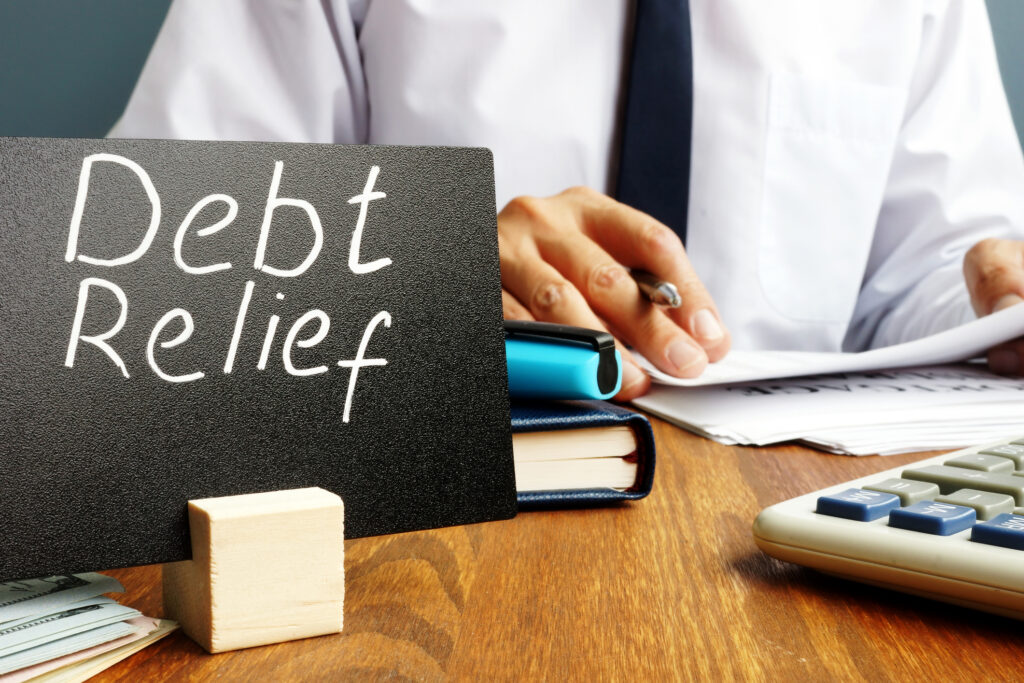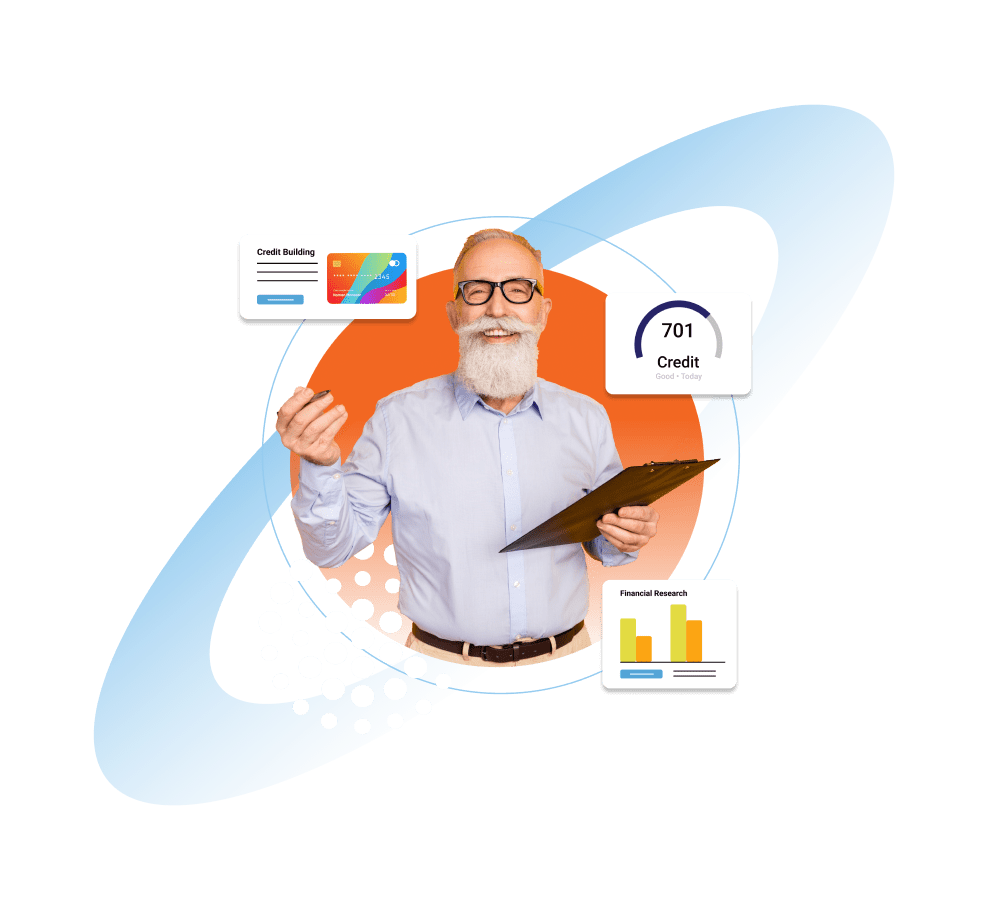If you’re dealing with credit card debt, you’re not alone. Millions of Americans struggle with carrying balances and paying high interest rates on their credit cards. While getting out of debt can be challenging, exploring the best way to pay off credit card debt with strategies tailored to your situation can help make it much more manageable.
There’s no one-size-fits-all “best” method for everyone to pay off credit card debt, but considering factors such as your total debt amount, interest rates, income, and personal preferences can help determine which approach may work well for you.
Key Takeaways
- Take stock of your total outstanding debt, interest rates, and debt-to-income ratio.
- Evaluate payoff methods such as the debt snowball, debt avalanche, balance transfers, and debt consolidation.
- Create a personalized plan that fits your budget and motivation style.
- Stay on track by increasing income, negotiating rates, and celebrating milestones.
First, Take Stock of Your Debt
Before deciding on a debt payoff strategy, make a list of all your outstanding credit card balances and interest rates. Calculate the total amount you owe across all cards. This number can be daunting, but having a clear picture is important. It’s also helpful to assess your debt-to-income ratio, which compares how much you owe to how much you earn.
Factors to Consider When Choosing a Payoff Method

As you explore different debt payoff methods, remember the best way to pay off credit card debt depends on several key factors:
- Total debt amount and number of accounts
- Interest rates on each card
- Your income and budget constraints
- Personal preferences and what motivates you
The Debt Snowball Method: Could It Work for You?
One popular strategy to pay off credit card debt is the debt snowball method, where you:
- List out your debts from the smallest balance to the largest
- Pay the minimum on everything except the smallest debt
- Throw extra funds at the smallest debt until it’s paid off
- Once the smallest is paid, roll those payments to the next debt, and so on
The biggest advantage is the motivational “snowball” effect of knocking out entire debts quickly. However, this approach may lead to paying more interest than other methods. The debt snowball could be a good fit if you have lower balances at similar interest rates and psychological wins are important for your motivation.
The Debt Avalanche Method: A Better Fit?
Another debt payoff method is the debt avalanche. With the debt avalanche method, you:
- List out all your debts from the highest interest rate to the lowest
- Pay the minimum on everything except the highest-interest debt
- Attack the highest-interest debt with all extra payments
- Once the highest interest is paid, roll those payments to the next highest, and so on
This method can save you the most money on interest over time compared to other strategies, but it requires patience as progress may feel slower initially. The debt avalanche tends to work best if you have higher total debt, accounts with vastly different interest rates, or if minimizing interest is your top priority.
Other Options to Explore
Balance Transfers
If you have a credit card with a high interest rate, let’s say 18%, this means for every $100 you owe, you’re charged $18 in interest each year on top of your minimum payment. A balance transfer allows you to move that existing debt from your high-interest card to a new credit card with a lower, or even 0%, introductory APR (Annual Percentage Rate) for a set period. This can be 12 months, 18 months, or even longer depending on the card.
Benefits of Balance Transfers
- Reduced Interest: Since you’re paying 0% interest during the introductory period, you save a significant amount of money compared to your old card’s high rate. This may free up more money each month to go directly towards paying down the actual debt.
- Consolidated Payments: Instead of juggling multiple credit card bills, you can focus on paying off one card with the transferred balance. This can simplify your budgeting and debt repayment plan.
Things to Consider
- Balance Transfer Fees: Most cards charge a balance transfer fee, typically ranging from 3% to 5% of the amount transferred. Make sure the interest savings outweigh this fee.
- Introductory Period: The 0% APR is only good for a limited time. After that period ends, a regular interest rate will apply, which could be even higher than your original card’s rate. It’s crucial to have a plan to pay off most, if not all, of the transferred balance before the intro period ends to help avoid accruing high interest again.
- Credit Score Impact: Applying for a new credit card can temporarily negatively impact your credit score. It is important to consider whether balance transfers could hurt your credit score.
Overall, balance transfers can be powerful when it comes to paying off credit card debt, but it’s important to use them strategically and be aware of the potential drawbacks. If you’re considering a balance transfer, be sure to compare offers from different card issuers and choose one with a long enough introductory period, a low balance transfer fee, and a good reputation for customer service.
Debt Consolidation Loans
A debt consolidation loan from a bank, credit union, or online lender can help simplify multiple payments into one fixed monthly bill, ideally at a lower interest rate than your cards.
Benefits of Debt Consolidation Loans
- Simplified Payments: Juggling multiple credit card bills with varying due dates and minimum payments can be overwhelming. Debt consolidation replaces these with one, fixed monthly payment to the loan provider. This can simplify budgeting and help ensure you don’t miss payments.
- Potentially Lower Interest Rate: Debt consolidation loans often come with lower interest rates compared to credit cards. When you replace your high-interest credit card debt with a lower-rate loan, you can save a significant amount of money on interest charges over time. This can free up more money each month to go towards paying down the principal amount of the loan.
Things to Consider
- Loan Terms: Carefully evaluate the loan terms, including the interest rate, repayment term (length of the loan), and origination fees (a one-time fee charged for processing the loan). Ideally, you want a lower interest rate than your current credit card debt and a repayment term that motivates you to pay it off quickly.
- Debt Trap Potential: If you don’t address the underlying spending habits that led you into debt, a consolidation loan can turn into a trap. The convenience of a single payment might tempt you to rack up more credit card debt, making it even harder to get out of debt.
Overall, debt consolidation loans can be valuable for simplifying your finances and potentially saving money on interest. However, it’s crucial to use them responsibly and have a plan to pay off the loan to help avoid getting deeper into debt. Before taking out a consolidation loan, consider your budget and create a realistic repayment plan.
Consult with a Credit & Debt financial coach for personalized guidance on managing your debt.
Debt Management Plans
These plans from non-profit credit counseling agencies bundle your debts into one payment and negotiate lower interest rates with lenders.
Benefits of Debt Management Plans
- Reduced Interest Rates: Credit counseling agencies can often negotiate lower interest rates with your creditors, which can save you money on interest charges and accelerate your debt payoff.
- Simplified Payments: Having one monthly payment to make can simplify budgeting and help ensure you don’t miss payments on your enrolled debts.
- Expert Guidance: Credit counselors can provide financial education and counseling to help you develop healthy budgeting habits and avoid future debt problems.
Things to Consider
- Credit Score Impact: Enrolling in a debt management plan may cause a temporary dip in your credit score as it involves opening new accounts with the credit counseling agency.
- Fees: There are typically enrollment fees and monthly maintenance fees associated with debt management plans. Make sure the potential savings on interest outweigh these fees.
- Not a Quick Fix: Debt management plans are designed to help you repay debt over time. Sticking to the program requires commitment and financial discipline.
Overall, debt management plans can be helpful for people struggling with unsecured debt. They offer professional guidance, potentially lower interest rates, and a structured approach to repaying debt. However, it’s important to weigh the potential drawbacks, such as fees and credit score impact, before enrolling.
How to Create Your Personalized Debt Repayment Plan

- First, review your total outstanding balances, interest rates, income, and budget to figure out how much you can realistically put toward debt each month.
- From there, choose the payoff strategy that best aligns with your situation and personal preferences.
- Next, develop a realistic timeline for becoming debt-free while still contributing to savings and retirement.
Need help? Get in touch with a Credit & Debt financial coach today!
Tips to Stay on Track
- Identify ways to help increase your debt payments, such as picking up a side gig or cutting expenses.
- Put raises, bonuses, and tax refunds toward your debt.
- Contact card issuers about reducing your interest rates or potentially settling balances if you’re really struggling.
- Find ways to stay motivated along the way.
FAQs
What’s the difference between the debt snowball and debt avalanche?
The debt snowball prioritizes paying off debts from smallest balance to largest, while the debt avalanche tackles debts from highest interest rate to lowest. The snowball provides motivational wins sooner but may cost more in interest over time.
Should I take out a debt consolidation loan?
A debt consolidation loan could simplify payments and potentially lower interest rates. However, it may extend your repayment timeline. This option may be best if you can get a much lower rate and remain disciplined in avoiding future debt.
What if I miss payments or rack up new debt?
If you miss payments or get new debt, you should try to get back on track as soon as you can. Here’s what you can do:
- Adjust your budget or payoff plan if needed.
- Speak with a financial coach for personalized advice and accountability.
The key is persisting and not letting setbacks derail your progress.
What is the correct way to pay off a credit card?
The correct way to pay off a credit card is to make at least the minimum payment on time each month to avoid late fees and damage to your credit score. Ideally, pay off the full balance by the due date to avoid interest charges.
What is the best order to pay off credit card debt?
The best order to pay off credit card debt depends on your financial situation. Two common strategies are:
- Avalanche Method: Pay off cards with the highest interest rates first while making minimum payments on the others. This minimizes the total interest paid.
- Snowball Method: Pay off the smallest balances first for quick wins and momentum, then move on to larger balances.
What is the fastest way to get out of credit card debt?
Here are tips to get out of credit card debt quickly:
- Cut unnecessary expenses and allocate extra funds to debt payments.
- Focus on high-interest debts first (Avalanche Method) to reduce overall interest costs.
- Consider a balance transfer card with a 0% interest introductory period or a debt consolidation loan to simplify payments and lower interest rates.
- Increase income through side jobs or selling assets to pay off debt faster.
When paying off credit cards, what is the best strategy?
The best way to pay off credit card debt depends on several factors, including the total amount of debt, the number of accounts, interest rates on each card, your income and budget, and personal preferences. Ultimately, the best strategy is one that aligns with your financial situation, keeps you motivated, and helps you stay consistent in paying down your debt.
Bottom Line: Best Way to Pay Off Credit Card Debt
There are multiple approaches to paying off credit card debt, and the “best” strategy depends on your unique situation. Taking a hard look at your finances and motivation style can help determine the best way to pay off credit card debt that suits your needs.
Don’t let credit card debt hold you back. Credit & Debt offers a variety of resources to help you develop a personalized plan to tackle your debt. Financial coaches can help you explore all your options, including debt consolidation, credit card balance transfers, and debt management plans. Take control of your finances today and contact Credit & Debt for a tailored debt payoff plan.
